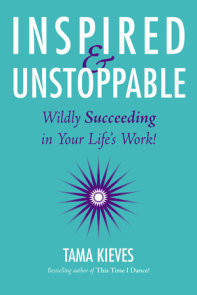TEACHING GUIDE
NOTE TO TEACHERS
Please click on the PDF link at the bottom of this page to download the Teacher’s Guide.
Discussion Guide © The Main Idea 2018
Black Box Thinking
Why Most People Never Learn from Their Mistakes—But Some Do
by Matthew Syed
Portfolio | Hardcover | 978-1-59184-822-6 | 336 pages | $27.95
Also available in e-Book format and Audio Download
THE MAIN IDEA’s Discussion Questions for Black Box Thinking
Use these discussion questions with school or district leaders or just on your own for reflection!
OVERALL QUESTIONS
1. To get the discussion going, have people discuss one or both of the following quotations (both from p.211 of the book):
“We learn not just by being correct, but also by being wrong.”
“The problem with academia is that it is about being good at remembering things like chemical formulae and theories, because that is what you have to regurgitate. But children are not allowed to learn through experimenting and experience. This is a great pity. You need both.”
2. Think of a time you failed or performed badly in something. How did you respond?
QUESTIONS FOR PART I: THE LOGIC OF FAILURE
1. In Part I, author Matthew Syed contrasts the different ways the health care and aviation fields approach error. How would you describe these differences and why do you think they exist? Do you believe education has an overall approach to failure? Think of a recent example of a failure in your school/district and how it was handled. Discuss this.
2. There are a number of examples of preventable errors that occur in the medical field (misdiagnoses, dispensing incorrect drugs, harming the patient during surgery, operating on the wrong part of the body, improper transfusions, postoperative complications, etc.) —do you think we are inadvertently harming our students in any way with our “errors” in education? Discuss.
3. Syed writes that doctors often use euphemisms for failure such as “technical error,” “complication,” or “unanticipated outcome.” Do we use any euphemisms for failure in education?
4. Small errors are often warning signs of more catastrophic failure to come. What systems do we have in place to surface smaller errors in education? How could we do a better job of this?
5. What if we studied failure rather than success in the field of education? What might this look like?
QUESTIONS FOR PART II: COGNITIVE DISSONANCE
1. Part II of the book provides several examples of cognitive dissonance—when our beliefs are challenged by evidence—Holly’s murder, the cult, and weapons of mass destruction. How was it possible for people to continue to believe their own judgments were accurate when confronted with conflicting evidence?
2. Many of the examples in this book do NOT come from education. Do you think cognitive dissonance is equally alive and thriving in the field of education? Can you think of an example? Or, how might education be different from these other fields?
3. In recent years, the idea of “data-driven decision making” has taken root in the field of education. How does the concept of cognitive dissonance affect how you might think about or approach data-driven decision making?
QUESTIONS FOR PART III: CONFRONTING COMPLEXITY
1. Syed states that progress is a complex interplay between theoretical ideals and practical trials and applications. Unfortunately, we often bypass the messy bottom-up part of the equation, and view the world in a simpler way with a simpler top-down solution. Can you think of an example of a top-down solution (in any field) that was too theoretical and didn’t involve enough bottom-up testing?
2. How do we “conduct tests” in the world of education? What does this look like? How could we do a better job of this?
3. In the Unilever example, they failed 449 times before coming up with a successful detergent nozzle. What is the most that your school/district/classroom has failed and been honest enough to admit it or learn from it?
4. In the book, there is the mention of one top-down idea in our field of education. Syed says that politicians come up with the theory that discipline will improve if students wear school uniforms. But, he asks, have they considered using a trial and error process to test this? What other examples of ideas that sound logical and compelling do we have in education, but which haven’t been tested with a simple trial and error test? What could we do to test these initiatives?
QUESTIONS FOR PART IV: SMALL STEPS AND GIANT LEAPS
1. The idea of marginal gains was introduced in the book: if you cannot test solutions to a larger issue like poverty, you can break it down into smaller parts to test. For example, you could test programs to address malaria, literacy, road-building, education, or infrastructure. If you try one program at a time, then you can run a controlled experiment and see if it is working. What is an example of a problem in education we might break down into smaller parts to begin to test? How would you break that problem down?
2. There is a big push these days to focus on data in schools. However, data alone does not solve problems. Syed argues that successful small solutions result from looking at the data, and then engaging creativity, judgment, and feedback. Does your school or district incorporate these three elements into its data examination process? How might your school’s approach to data be improved?
2. Syed describes how Charlan Nemeth’s experiment with groups shows that when groups encourage criticism in brainstorming, they come up with more and better solutions than when groups disallow criticism. What are the implications for staff or teacher teams? Note that even when groups don’t prohibit criticism outright, they often function with a “culture of nice.”
3. Try your own experiment. Have a group of staff conduct a brainstorming session to address a real problem at your school with NO commentary, feedback, or criticism. Then have the group attack another problem and this time, for each proposed solution, have every individual share one thought about how the idea might be improved. Which conversation yielded more and better solutions?
QUESTIONS FOR PART V: THE BLAME GAME
1. A big theme in this section is that an organization’s culture influences how people respond to mistakes. How can you build a culture in your school/district in which mistakes are not suppressed and instead are used as tools to drive progress? Brainstorm some ideas.
2. This section describes two nursing units—a high-blame and a low-blame one. When people anticipate being blamed for errors, they are more likely to cover them up as the nurses did in the high-blame unit. In 2009, we saw this in education in the largest cheating scandal on a standardized test in Atlanta (see this New York Times article: https://www.nytimes.com/2015/04/02/us/verdict-reached-in-atlanta-schooltesting-trial.html or this longer piece in The New Yorker: https://www.newyorker.com/magazine/2014/07/21/wrong-answer) Consider having your leadership team read one of these articles and discuss how your school/district can avoid this type of approach to high-stakes testing.
3. In education, we are living in a time when the idea of “accountability” has taken hold. How is accountability different from blame?
4. In one study mentioned in Part V, people blamed a driver for cutting across lanes. Then they were asked to look inward, “What happened the last time you jumped lanes?” Take some typical errors that students make, and turn those inward for teachers to discuss to better understand those mistakes: When was the last time you arrived late? When was the last time you turned in something late (a bill, paperwork, etc.)? When was the last time you performed poorly on a task? The same can be done to help administrators better understand the underlying reasons for the mistakes staff make.
QUESTIONS FOR PART VI: CREATING A GROWTH CULTURE
1. Given that some people say the most important indicator of a person’s growth mindset is her willingness to try, fail, and learn, what questions could you ask potential teacher or administrator candidates to determine if they have this quality?
2. Given that the Moser study in this section shows that people with a Fixed Mindset are less likely to pay attention to their errors, what structures can you put into place to get students to stop and pay attention to their mistakes? One structure I like is from Paul Bambrick-Santoyo in Driven by Data. He suggests having students reflect on their errors by giving them a template (pp.97-98 of the book) in which students examine errors they made on a test and categorize those errors.
3. If blaming others and fearing failure are both obstacles to learning, what can you do to overcome these in yourselves and help students overcome them? What can you do to build a culture that normalizes error and supports the growth mindset?
4. Everyone has heard about an individual having a growth or fixed mindset. How can an organization have one? What might a district or a school look like when it exhibits a growth mindset?
5. Do a jigsaw with several readings about mindset. Have people read Mindset (The Main Idea summary or book) and others read Grit (the book or The Main Idea’s BookBit) and the math teachers read Mathematical Mindsets (the book or The Main Idea’s BookBit). Note The Main Idea has discussion questions and PD ideas for each book. Then have the three groups share what they learned.
6. What type of annual event might your school or district establish to highlight failure like the one in this chapter in which a high school in London established an annual “failure week” which included assemblies and workshops in which failure was celebrated. They brought in parents and other professionals to speak about the failure in their lives and what they learned from it and shared YouTube clips of famous people practicing, making mistakes, and practicing some more. Brainstorm what your school could do.
7. Once you have developed a more productive mindset about failure, you can begin to put the systems in place necessary to support learning from error. Brainstorm what your school/district could do to institutionalize a process to examine actual data from failures and receive feedback in order to move forward.
In conclusion, from everything you’ve learned in this book—are you a “black box” thinker? Is your organization a “black box” organization? What do you take away from this that you could begin to implement to incorporate more “black box” thinking?
About the Guide Writer
Jenn David-Lang runs THE MAIN IDEA (www.TheMainIdea.org)—a subscription service that provides monthly summaries of the best current education and leadership books for school leaders. Jenn founded THE MAIN IDEA in 2007 because she witnessed too many school leaders who were so busy with the day-to-day responsibilities of running their schools, that they had no time for their own professional development.
Penguin Random House Education, 1745 Broadway, New York, NY 10019
penguinrandomhouseeducation.com • commonreads.com
QUERIES: rhacademic@penguinrandomhouse.com
© The Main Idea 2018
×
Become a Member
Just for joining you’ll get personalized recommendations on your dashboard daily and features only for members.
Find Out More Join Now Sign In





















